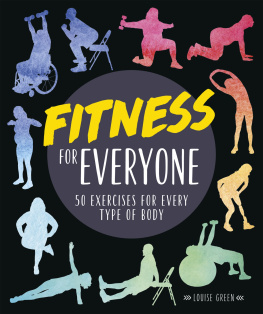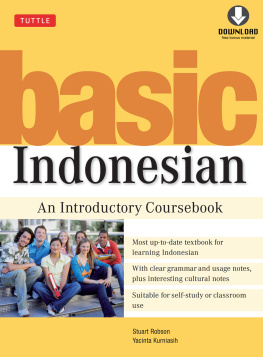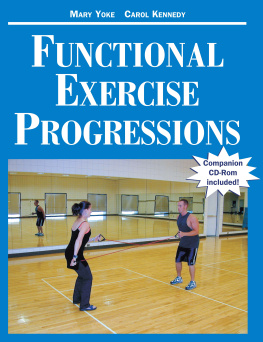
Digital Design Exercises for Architecture Students
Digital Design Exercises for Architecture Students teaches you the basics of digital design and fabrication tools with creative design exercises, featuring over 200 illustrations, which emphasize process and evaluation as key to designing in digital mediums. The book is software neutral, letting you choose the software with which to edit raster and vector graphics and to model digital objects. The clear, jargon-free introductions to key concepts and terms help you experiment and build your digital media skills. During the fabrication exercises you will learn strategies for laser cutting, CNC (computer-numerically controlled) milling, and 3D printing to help you focus on the processes of design thinking. Reading lists and essays from practitioners, instructors, and theorists ground the exercises in both broader and deeper contexts and encourage you to continue your investigative journey.
Jason S. Johnson is an associate professor of architecture and co-director of the Laboratory for Integrative Design at the University of Calgary in Alberta, Canada. He is an award-winning designer and the founder of Minus Architecture Studio.
Joshua Vermillion is an assistant professor and SimLab coordinator at the
University of Nevada, Las Vegas, USA.
Digital Design Exercises for Architecture Students
Edited by Jason S. Johnson and Joshua Vermillion

First published 2016
by Routledge
711 Third Avenue, New York, NY 10017
and by Routledge
2 Park Square, Milton Park, Abingdon, Oxon OX14 4RN
Routledge is an imprint of the Taylor & Francis Group, an informa business
2016 Taylor & Francis
The right of the editors to be identified as the authors of the editorial material, and of the authors for their individual chapters, has been asserted in accordance with sections 77 and 78 of the Copyright, Designs and Patents Act 1988.
All rights reserved. No part of this book may be reprinted or reproduced or utilized in any form or by any electronic, mechanical, or other means, now known or hereafter invented, including photocopying and recording, or in any information storage or retrieval system, without permission in writing from the publishers.
Trademark notice: Product or corporate names may be trademarks or registered trademarks, and are used only for identification and explanation without intent to infringe.
Library of Congress Cataloguing in Publication Data
Names: Johnson, Jason S., editor. | Vermillion, Joshua, editor.
Title: Digital design exercises for architecture students / Jason S. Johnson and Joshua Vermillion, editors.
Description: New York, NY : Routledge, 2016. | Includes bibliographical references and index.
Identifiers: LCCN 2015034997| ISBN 9781138823129 (hardback : alk. paper) | ISBN 9781138823143 (pbk. : alk. paper) | ISBN 9781315742229 (ebook)
Subjects: LCSH: Architectural designData processing. | Architectural design--Problems, exercises, etc.
Classification: LCC NA2728 .D53 2016 | DDC 729.0285--dc23
LC record available at http://lccn.loc.gov/2015034997
ISBN: 978-1-138-82312-9 (hbk)
ISBN: 978-1-138-82314-3 (pbk)
ISBN: 978-1-315-74222-9 (ebk)
Acquisition Editor: Wendy Fuller
Editorial Assistant: Grace Harrison
Production Editor: Alanna Donaldson
Typeset in Bembo by
Servis Filmsetting Ltd, Stockport, Cheshire
Contents
Tom Verebes
Andrew Kudless
Jason S. Johnson and Joshua Vermillion
Joshua Taron
Jason S. Johnson and Joshua Vermillion
Marc Fornes
Jason S. Johnson and Joshua Vermillion
Simon Kim
Jason S. Johnson and Joshua Vermillion
Joshua Taron in conversation with Benjamin H. Bratton
Tom Verebes
Modern Industry had therefore itself to take in hand the machine, its characteristic instrument of production, and to construct machines by machines.
Karl Marx, Capital, vol. I, p.384
Karl Marxs machines, which make machines, were recapitulated over a century later in 1969, with Nicholas Negropontes forecast of automated machines to assist the design process.blindly but most often bravely by a generation of digital natives, we are now witnessing the consolidation of the primitive discoveries of early adopters, to the civilization of a maturing technological culture.
Publishing a textbook in 2015 on how one learns to design computationally raises a paradox of the topic relating to rapidly evolving technologies driven by opportunistic communities of users. Despite the demonstrable cutting-edge design methods, tools, and techniques featured in this book, the longevity of instrumentality of the books content should be called into question. The syllabi of architectural courses teaching computational design have so often been updated that there seems to be few, if any, constants in a computational curriculum over the last two decades. This raises the question of how quickly a book focusing on digital design pedagogy will become a history book soon after its publication. Quickly shifting paradigms and the corresponding rapidity of technological innovations render a textbook simultaneously potentially just so last year, and so quickly, possibly, another important book on the history, or the later archeology of digital practices. This book may not be about teaching computational design. Perhaps this book is more about the establishment of the culture surrounding these technologies than it is an explicit handbook of how to learn and apply the tools themselves.
Educating natives: learning not teaching
The digital natives represented in this book are evidence of the emergence of an autodidact generation in which teaching has become less effective than learning. Peer-to-peer learning from others, through haptic opportunity, accident, and serendipity, has all but rendered obsolete the traditional authoritative role of the teacher to the student absorbing knowledge passively. For years I have been asserting, within the context of designing and amending university curricula, how architecture schools will soon no longer need to teach computation. This is not to say that computational design and production will be out of fashion, although there remains no shortage of people in architecture who would wish this to be the case. This implies how digital natives no longer require the basics to be taught. If natives do not know the basics already, they will quickly teach themselves. As a personal anecdote, my son was born definitively in the digital age, in 1999. At the age of 11, in 2010, he phoned me at work to tell me he had downloaded a free software application called Sketch-Up and had modeled our house and had also made an animation fly-through. The authors and designers included in this book, not its younger readers, should tremble at the facility, fluency, and latent power of the next generation, the true digital natives.
Collaborative models and the opening of sources
In the 1980s, when greed, individuality, and the early days of starchitecture flourished, information was under-valuated and rarified, and the conduits of networks were limited to one-to-one. In a world of digital communication, where we can all quickly access vast flows of information, sent from one to the many, a context of open source sharing is firmly a more powerful resource than any university library can provide the digital learner.
Next page










